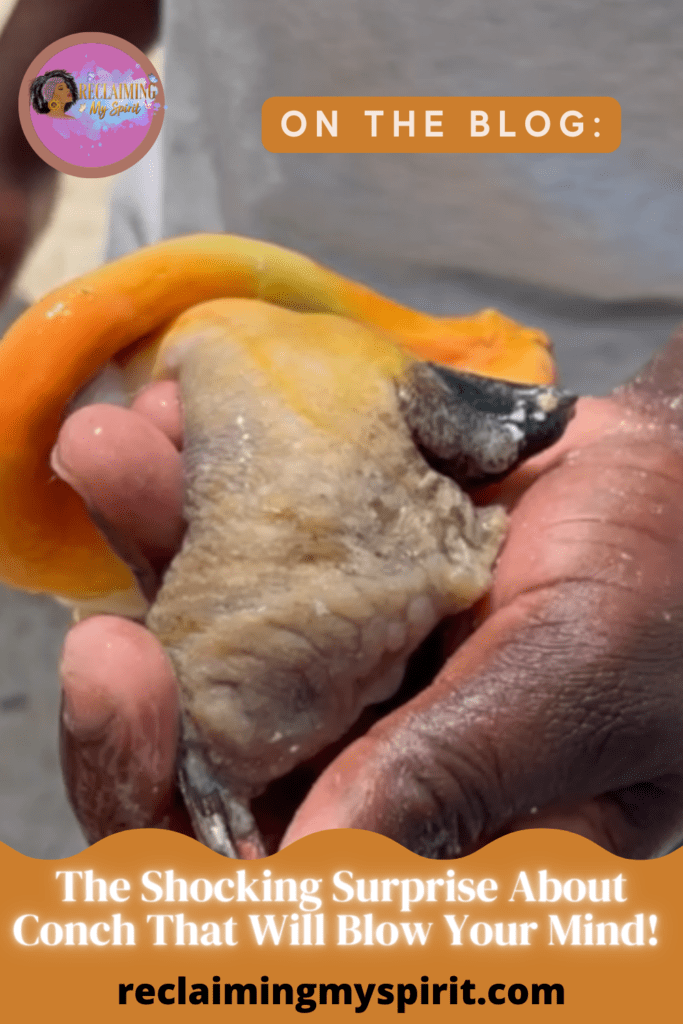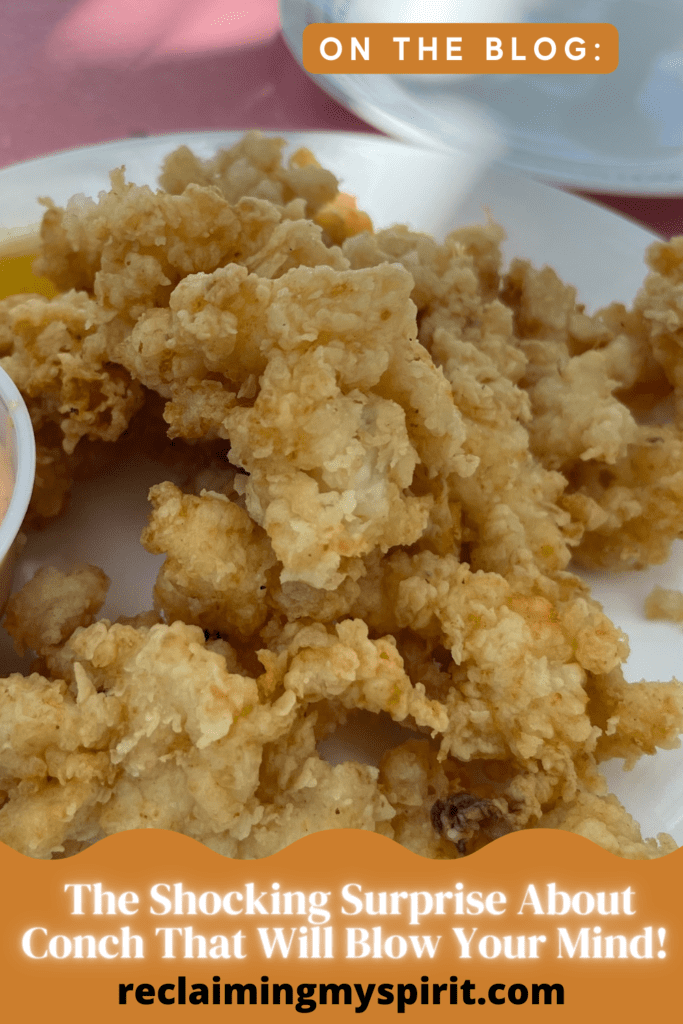

Unveiling The Shocking Surprise About Conch

There’s at least one shocking surprise about conch that will likely blow your mind. I know it blew mine when I learned about it on our trip to Turks and Caicos last year.
You can read about some of the amazing experiences we had while were there. I posted about them in some of my blog posts.
I was so amazed when I learned that shocking surprise about conch, I wanted to know more. So, prepare to be transported into the hidden world of conchs, where an array of surprising secrets awaits.
These marvelous marine creatures have a story to tell, one that will both captivate and astonish you. From their remarkable lifespan to their unique reproductive methods, conchs are a treasure trove of intriguing facts that will leave you in awe.
So without further ado, let’s get to it!

The Surprising Life Span of A Conch

While exact lifespans vary among different species of conchs, it is not uncommon for them to live up to 20 to 30 years, and some have been known to reach the impressive age of 40 or more.
This longevity can be attributed to the conch’s ability to adapt and withstand the challenges of their ocean habitats. Their resilience and longevity make them true survivors of the sea.

The Shocking Surprise About Conch Shell

The journey of a conch begins as a tiny larva hatches from its egg and embarks on a remarkable adventure. As it grows, the conch builds its characteristic spiral shell, layer by layer, year by year.
Each ring on the shell tells a story of growth and endurance, revealing the conch’s age and the challenges it has faced throughout its life.

The Biggest Shocking Surprise About Conch

I don’t know why I was so surprised to find out this shocking surprise about conch but I certainly was. Perhaps you’ll be shocked and surprised to. So, here’s the deal.
Unlike terrestrial creatures, conchs possess both male and female reproductive organs, a phenomenon known as sequential hermaphroditism.
Initially, they begin life as males, and as they mature, they undergo a remarkable transformation, blossoming into females.
This extraordinary adaptation allows conchs to maximize their reproductive potential by transitioning between genders, effectively doubling their chances of successful fertilization.

Seeing Is Believing!

Seeing is believing and I was a believer after I saw the proof. I mean there’s no denying what you see in the picture above. Based on the evolution of a conch, I guess this one is still in the younger phases of life.

The Female Phase

During the pinnacle of their reproductive cycle, female conchs release thousands of tiny eggs into the vastness of the ocean. Floating weightlessly, these translucent orbs hold the promise of a new generation.
However, the journey towards life is treacherous for conch offspring, as they face the perils of predators and inhospitable conditions. Only a fortunate few will survive to maturity, evolving into resilient beings that will carry the legacy of their ancestors forward.

See The Video

Now, I have to admit, learning about conch and seeing and then tasting it made the experience absolutely magical. Here’s the TikTok video I made about it.

@khadeejamorse #question from @khadeejamorse #didyouknow #conch #have 🍆 ?! 😳 #ilike #my #seafood #genderneutral #howaboutyou #bucketlist #bucketlisttravel #bucketlistvacations #mothersday #mothersdaygift #travel #traveltiktok #caribbean #vacation #turksandcaicos #caribbeanislands #SearchForWonderMom #iwasntready #reclaimingmyspirit
♬ original sound – Khadeeja Morse RMS
But Wait, There’s More!
As I did some research I found even more shocking surprises about conch. Let me know if you enjoyed learning this and if you want to find out more.
So until next time,
Namaste,
Khadeeja







